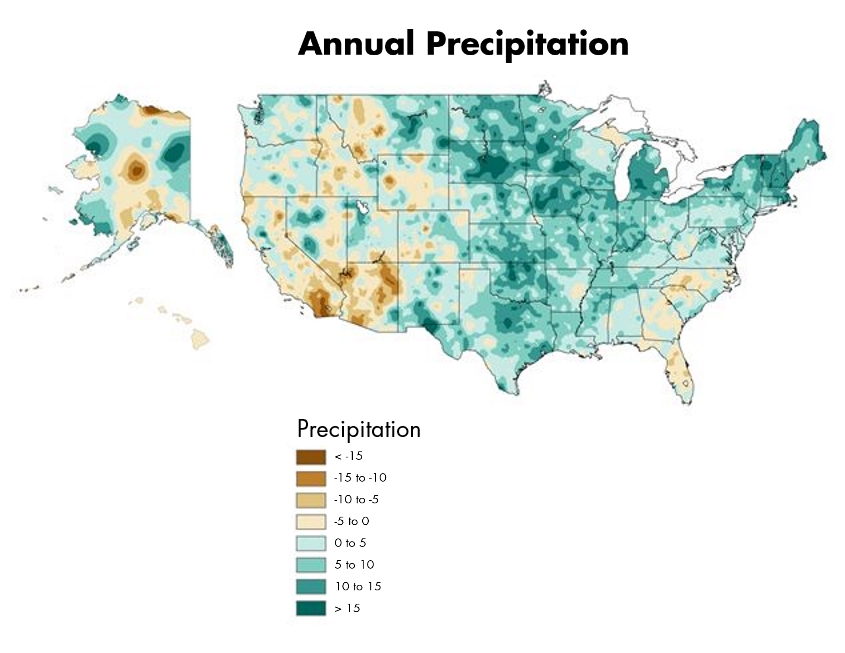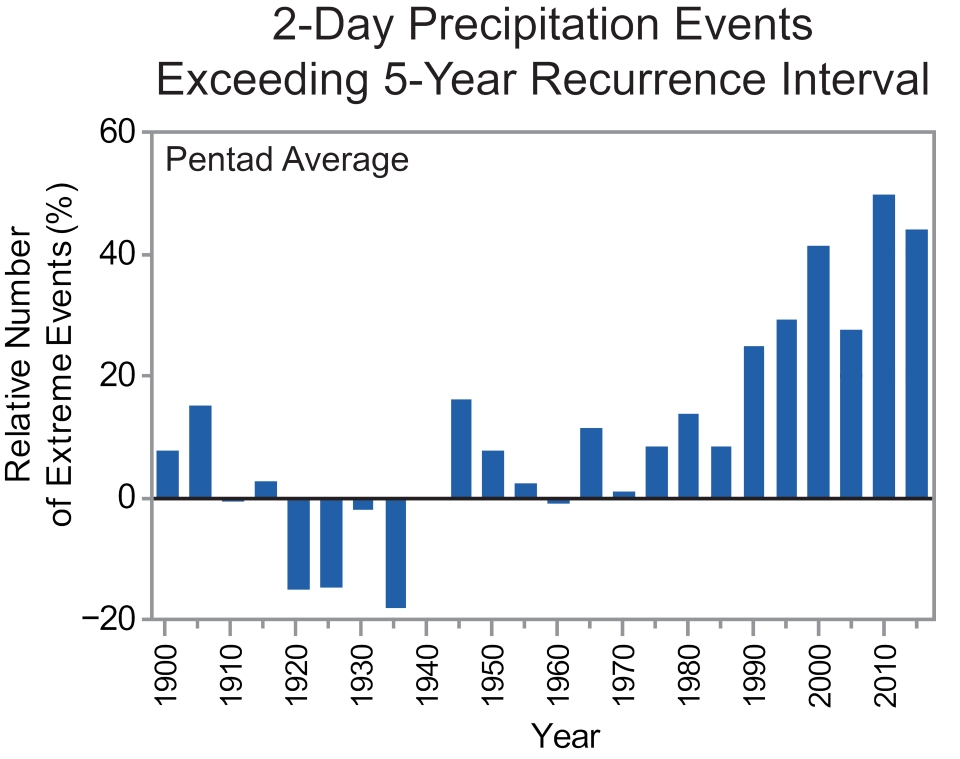Farmers Should Live Like They’re in a Drought, Even When They’re Not [Opinion]
When faced with running out of water, 4 million citizens of Cape Town, South Africa, rallied. Between 2015 and today, Cape Town reduced its water use by 60% — from 317 million gallons daily to 136 million daily.
In comparison, California reduced water use by 27% in 2015 during its drought.
Growers near Cape Town also reduced water use by 60%. They used measures like recycling irrigation runoff after purifying it. They had also laid groundwork by pooling funds to build their own reservoirs and dams.
Competition for Water Will Only Increase
Although rainfall for the U.S. is increasing overall, how, when, and where it falls is becoming a problem. Climate Science Special Report, backed by 13 U.S. government agencies, shows extreme precipitation, or a minimum of 2-day rain events, has been on a sharp upswing since 1990.
The report tallied extreme precipitation over 5-year periods, measuring how far above and below the norm each period veered. Between 1900 and 1990, only four periods veered above the norm by 10 events. Yet every 5-year period since 1990 has recorded more than 20 extreme events above the norm. Three periods had more than 40 events.
This means that although rainfall is increasing, it’s often limited to extreme events between long, dry spells.
Another pattern is that rain is falling more in some parts of the U.S., and less in others. The Great Plains and Northeast are the recipients of much of this rainfall, while much of the West and Southwest are growing drier.
When you compare the precipitation maps to where populations are growing and shrinking, it’s striking to see areas with increased rainfalls are losing population, while drier areas are gaining.
That means growers who aren’t already competing for water with metropolitan areas will be. That is, unless you’re in the Midwest or Northeast, where excessive rainfall is a threat of another kind.
Think about what that means to you as a grower. California growers already have complex rules that force them to abandon crops in the field during droughts. The smartest strategy is to take action, not only with conservation measures on your farm, but also politically. Engage local water boards and policy makers now, before a crisis arises, to figure out a fair solution.
Less water creates conflicts. The growers who can demonstrate they can learn from their peers in South Africa in conserving water and building political relationships will be the most likely to succeed.
Oh, One More Thing
Worldwide water issues have driven an immense amount of research. Here are three striking graphics that illustrate how water may affect growers’ future.

Source: Climate Science Special Report
This shows how precipitation has changed. Researchers took the precipitation data from 1901 through 1960 and compared it to precipitation data from 1986 to 2015. Green shows an increase, while browns show a decrease.

Source: Climate Science Special Report
Again using data from 1901 to 1960 as a norm, this graphic shows how many extreme precipitation events veered from the norm. The first time the U.S. saw 20 such events occur in a 5-year span was between 1986 and 1990, and it has stayed elevated at the level or higher ever since.

Source: EPA
Drought has plagued the Southwest, including California and Arizona, two major growing states. This table shows what percentage of land has been marked with drought and the severity of the drought.









